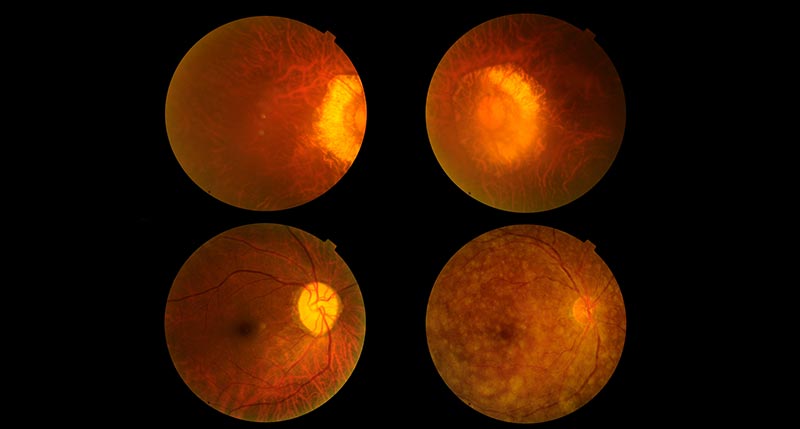With winter comes dropping temperatures, cold winds, and low humidity — all of which bring unique challenges to caring for your eyes and vision.
Though you might be tempted to ignore cold weather eye symptoms, don’t! Be aware of symptoms including eye mucus, sensitivity to light, redness, dry or itchy eyes, burning, a gritty feeling, a sensation of something in the eye, and/or irritation when wearing contact lenses.
Enhance the joys of winter — whether you are working, playing, or just relaxing — by learning what can agitate your eyes and how to treat any resulting discomfort.
Environmentally Induced Dry Eyes
In winter months, humidity plummets and there is less moisture in the air … and in your eyes! Add to that the dry air inside as we ramp up the heat pumps, oil furnaces, and space heaters. Winter air is simply parched and it affects the health of your eyes.
One key to preventing environmentally induced dry eyes can be found in hydration:
- Try not to sit or stand directly in front of a heat source
- Aim car air vents away from your face
- Drink the appropriate amount of water daily (you may need more than you think)
- Use a humidifier
- Lower the temperature in your home or office space
- Cut back on screentime. You blink less when doing anything that requires a lot of visual attention. Less blinking = fewer tears = drier eyes!
This type of dry eye discussed above is strictly environmentally induced. The medical condition known as “Dry Eye” is a hormonal, age-related or medication-induced condition that should be managed by your optometrist.
Red, Itchy Eyes
Itchy eyes can be caused by environmental factors like dry air, bitter winds, and blowing snow. That annoying eye-itch can also be caused by allergies. Try over-the-counter (OTC) hydrating eye drops to help your itchy eyes but consult your optometrist about the appropriate type of eye drops for your specific needs.
If you wear contact lenses, note that there are specific types of eye drops especially formulated for contact users. If you don’t get enough relief from OTC eye drops, ask your optometrist about drops specifically formulated to relieve allergies.
Excessive Tearing
Cold temperatures, blowing snow, and blustery winds can sometimes cause your eyes to tear and water … it’s like the opposite of dry eyes. Excessive tearing is a normal response to the elements, but it can be an annoying one. Help protect your eyes from tearing by wearing sunglasses to protect your eyes from chilly winds and snow. Excessive tearing can also be caused by infection, dry eye, or a blocked tear duct — so it is important to consult your optometrist if symptoms persist.
Sensitivity to Light
The sun sits low in the sky in wintertime, and the angle of its rays can cause painful light sensitivity. If it’s snowy in your neighborhood, the light reflected off of snow and ice can also cause light sensitivity.
The solution for both scenarios? Polarized sunglasses! Polarization is a special coating that reduces glare by filtering out the sun’s horizontal rays (like the ones that bounce off the snow and ice). Wear them daily, especially during winter sports such as snow skiing, snowmobiling, or hiking snowy mountain trails. The sun’s UV rays are present in our atmosphere 365 days a year and can damage your vision over time, so make it a healthy habit to keep those sunglasses on year-round!
Need a new pair? Winter is a great time to visit our optical department and find the exact right pair that fits your face and your lifestyle.
Winter Sunburn and UV Damage
Yes, eyes can get sunburned — just like skin! The condition is called photokeratitis, and symptoms include increased irritation, eye fatigue, sensitivity, and pain. To relieve the discomfort, place a cold washcloth over your closed eyes, use artificial tears, take an OTC pain reliever, and avoid rubbing your eyes. Symptoms should subside in a day or two, but call our office if your symptoms persist.
Photokeratitis is especially common at higher altitudes where you are closer to the sun. Snow blindness is a common form of photokeratitis. It is a painful condition that affects the thin surface layer of the cornea, which is like the clear front window of the eye. It also affects the conjunctiva, the clear covering on the white part of the eye and inside the eyelids. Snow blindness can also refer to freezing or severe drying of the corneal surface.
The simple solution? Wear your 100% UVA- and UVB-blocking sunglasses or polarized sports goggles when participating in winter sports — even on overcast days.
Blurry Vision
The blood vessels in your eyes constrict as temperatures plummet, which can cause blurry vision. In severe cases, double vision can occur — usually only after spending several hours in freezing temperatures. It can be treated by allowing the eyes to return to a normal temperature.
Winter can be hard on the sensitive tissue of the eyes and skin surrounding the eyes. Be mindful of how you care for your “windows on the world.” Make eye care a priority.
In fact, it’s still January, so you can make it a resolution! We wish you health and happiness in this New Year!





